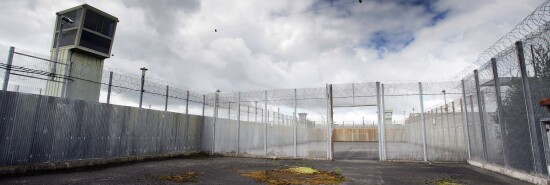
How to turn back the tide of violent crime
Josh Crawford
Video Embed
Shortly after 9 p.m. on Oct. 4, 9-year-old Dumarcus Fuller Jr. was killed in his Oklahoma City home in a drive-by shooting. It was just over a month after a similar drive-by shooting had killed 5-year-old Rayshard Scott in Fort Worth, Texas. These are just a few of the names of the young children who find themselves at the forefront of the increase in homicides and violence in cities over the last seven years. It has resulted in thousands more lives lost than if rates had stayed at their 2014 low.
While many things contribute to crime rates, former Attorney General William Barr was right when he wrote in the Wall Street Journal that increases in violence are a policy choice. And the people bearing the brunt of those policy choices come from our most vulnerable communities where violent crime not only cuts lives short but significantly reduces economic mobility. This means our poorest residents remain trapped in communities plagued by violence, unable to escape the cycle of poverty.
This is particularly true for black people. From 2011 to 2020, the percentage of violent crime victims who were black increased by over 3% to 33%. The percentage of black homicide victims similarly increased over this time period by nearly 3% to 54% of all homicide victims.
Reversing this trend requires policymakers first to understand what is driving this violence and then what to do about it.
In any given city, typically less than 1% of the city’s population is responsible for more than 50% of its homicides. This is the percentage of a city that belongs to gangs or street groups — less organized or hierarchical gangs. These are the people driving the violence. But it isn’t as simple as gang members killing each other. Take, for example, the recent sentencing of two gang members in Durham, North Carolina, for the murder of 9-year-old Z’yon Person. One of the two convicts is also a suspect in a 2019 drive-by shooting that injured a 13-year-old girl. Children routinely find themselves the victim of this senseless violence.
The protection of public safety and the furtherance of justice demand the apprehension, prosecution, and incapacitation of these types of offenders. Long sentences also reduce crime. Most recently, the U.S. Sentencing Commission once again found that recidivism rates were lower for inmates who served longer sentences.
But incarceration has its own costs, both fiscal and social. In 2015, 45 states spent just under $43 billion on prisons. Additionally, communities with high rates of parent-aged men cycling in and out of prison have weaker informal social controls and weaker social networks.
This means that rather than simply increasing penalties across the board, policymakers should look to more selective sentence enhancements, like those for offenses committed in furtherance of gang objectives. The same is true of policing. While U.S. cities are in desperate need of more police, another crucial part of the solution is to embrace proven strategies that focus on criminal street gangs and deter violence. So is ensuring homicide detective caseloads aren’t overwhelmed by increasing the size of those units.
It also means we have to do a much better job of turning former inmates into productive citizens. More than 95% of all state inmates will be released at some point, and a 10-year follow-up of inmates released in 24 states found an astounding 82% of them were re-arrested at least once during that period. This is unacceptably high and seriously jeopardizes public safety. It can trap those seeking redemption in a cycle of crime and poverty. Successful reentry programs are rare, but they do exist and ought to be replicated to see how wide their ability to reduce subsequent arrests and incarcerations can go.
Urban street crime is one of the most researched social phenomena in history. The technical literature is clear about what works in principle, and we owe it to Dumarcus, Rayshard, Z’yon, and every other child caught in the violent crossfire to apply those principles to policy.
CLICK HERE TO READ MORE FROM THE WASHINGTON EXAMINER
Josh Crawford is the director of criminal justice initiatives at the Georgia Center for Opportunity and a Young Voices contributor.
